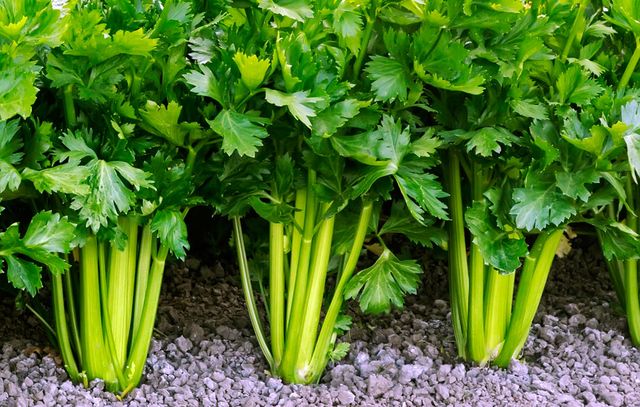Celery is a cool weather crop that can be tricky to grow, but pairing it with the right companion plants can help it thrive. Choosing plants that deter pests, attract beneficial insects, improve flavor and help maximize garden space makes for better results. After lots of research into compatible plants that should be planted near celery, I’ve compiled the following list of the top companion plant pairings.
What is Companion Planting?
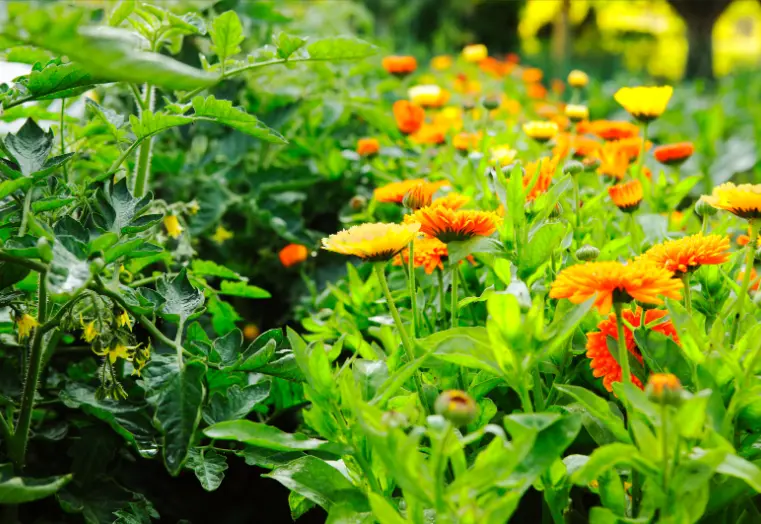
Companion planting means growing different plants together in a mastermind way. Throughout history, savvy gardeners realized certain plant partners can:
- Deter pests from munching on crops
- Attract good bugs that eat the bad ones
- Provide nutrients to fuel growth
- Support each other as they grow big and strong
Companion Plants that Deter Pests
Celery is prone to several pests like cabbage loopers, aphids, carrot flies, slugs and snails. Luckily there are many plants that will help keep these out of your celery patch when planted nearby.
Onions and Leeks
Onions and leeks repel many common celery pests, especially carrot flies and cabbage loopers. Their strong scent confuses these insects and prevents them from attacking tender celery plants. Interplant celery with onions and leeks in every 3rd or 4th row.
Garlic
Garlic is another strong scented plant that works to repel pests. It deters aphids, slugs, cabbage worms and more when planted around celery. Like onions and leeks, try mixing garlic throughout the celery beds for the best protective effect.
Mint
Mint’s potent fragrance and texture drives away pests like ants, aphids, beetles, flea beetles, cabbage worms, slugs and snails. Celery benefits from mint interplanted between rows or bordering beds. Just be cautious planting mint directly in celery beds as it can take over.
Flowers
Many blooming flowers also help deter celery pests. Marigolds, nasturtiums, petunias, geraniums and cosmos planted around the edges of celery patches or between rows add color while repelling insects with their unique scents.

Beneficial Insect Attracting Companion Plants
Beyond repelling pests, some plants actually attract beneficial predatory insects that prey on celery pests and pollinate plants. Planting these around and within celery can increase yields and quality.
Dill
This feisty herb beckons good bugs like ladybugs and lacewings that gobble up celery’s pests for lunch!
Parsley
Plant parsley around and between celery rows. Its blooms attract beneficial insects like hoverflies, predatory wasps and flies that control celery pests. Snip some parsley, too – it’s delicious!
Queen Anne’s Lace
Queen Anne’s Lace plants grow by the celery patch. Their white lacy flowers provide food for ladybugs, keeping these pest-eating insects patrolling your celery all season.
Companion Plants that Improve Celery Flavor
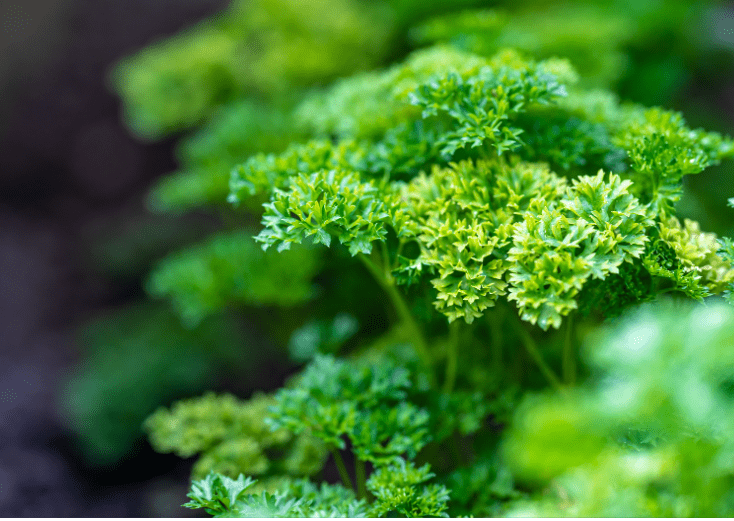
You know how celery can sometimes taste a bit bland or boring on its own? Well, did you know there are some plant buddies you can grow alongside your celery that actually make it taste better and more flavorful? It’s true!
Certain herbs and veggies release compounds into the soil that get absorbed by the celery stalks. This gives the celery a little boost of extra flavors and nutrients. It’s like giving your celery an all-natural seasoning boost straight from the garden!
Some of the top flavor-enhancing companions for celery include
Tomatoes
Tomato plants can help concentrate celery’s natural flavors and sugars for a more intense, robust taste.
Onions and Leeks
Let onion and leeks flavor celery as their scents mingle together in adjoining rows. The combination makes a tasty base for soups, stews, stuffing and more. Plus, onions and leeks deter celery’s pests. It’s a win-win pairing!
Carrots
Most any dish tastes better with added celery and carrots, so embrace the classic flavor combo in the garden too. The two cruciferous vegetables grow perfectly side by side. For easier care, match the maturity dates if planting a single crop.
Beans and Peas
Beans and peas infused into the celery bed through interplanting, borders or companion rows enhances celery’s flavor thanks to nitrogen released from legume roots. They favor celery’s moisture levels meaning less work for the gardener as well. Choosing bush varieties prevents overgrowth into celery rows.
Sage
Sage’s woodsy notes pair wonderfully with celery’s herbal taste. Planted within and around celery rows, sage leaves snip easily to blend into your favorite recipes or munch as a fresh garnish. Sage looks beautiful and keeps pests away too. It’s an ideal celery mate!
Companion Plants that Conserve Space

Why not grow compatible plants that mature at different times as celery companions? It amps up garden yield without requiring more square footage!
Radishes
Quick growing radishes thrive in cooler conditions, making them perfect partners to plant with celery, which takes much longer to mature. Slip seeds between celery transplants where both vegetables will benefit from ample moisture. Radishes will be ready to harvest just as gangly celery seedlings need more space.
Lettuce and Spinach
Shade loving greens like lettuce and spinach grow wonderfully beneath new celery plants. Take advantage of the sheltered microclimate among young celery stalks to sow salad ingredients that will be ready to eat long before celery matures. It’s an efficient use of planting space!
Bush Beans
Bush beans grow rapidly to form pods within two months. Celery needs 3-4 months to fully develop. Take advantage of quick growing beans as an intercrop among celery rows. Their symbiotic relationship improves both the bean and celery yield in the same garden area.
Green Onions and Chives
Slender green onion bunches fill narrow gaps between celery plants to provide two harvests from one bed. Or, sprinkle chive seeds throughout for an unplanned celery flavor boost! Chives grow lower to the ground than celery plants, so neither crop competes for light and nutrients.
Other Beneficial Companion Plants
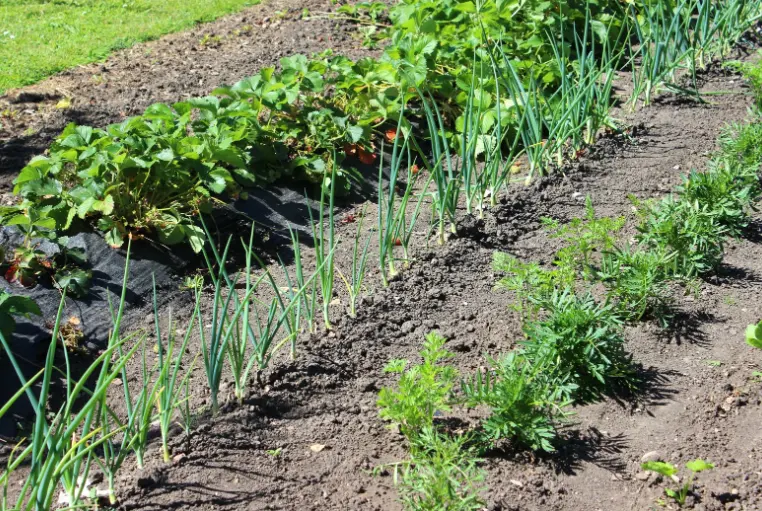
Some plants make great celery companions by improving growing conditions rather than through pest management, flavor or space efficiency. Be sure to incorporate these helpers into celery beds too:
Sweet Corn
Tall sweet corn stalks provide needed shade for moisture loving celery on hot summer days. Celery returns the favor by enhancing corn’s growth so it produces even more plentiful ears. Together they withstand wind better as well.
Strawberries
Strawberry’s extensive root systems help hold soil moisture in the celery bed and increase nutrition. The lush ground cover also prevents weed growth. Allow strawberry runners to meander among celery plants. Both will produce more abundantly from their neighborly roots.
Tips for Implementing Companion Planting
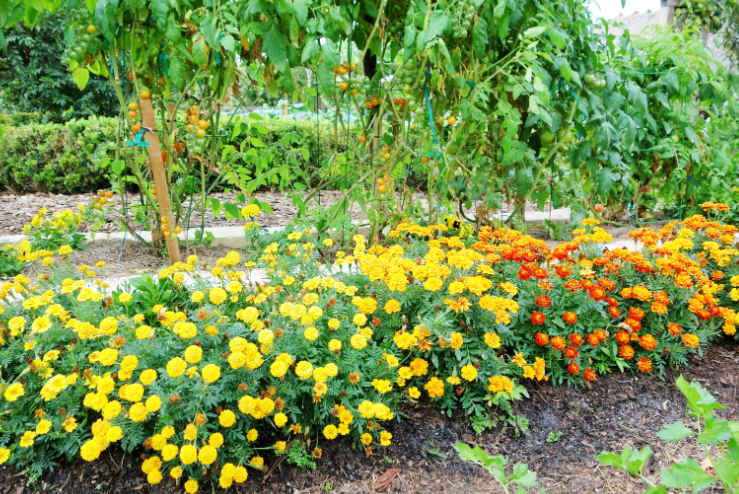
- Plan Your Plot: Sketch out your garden layout before you plant. Consider the needs and growth patterns of each plant to avoid overcrowding and resource competition.
- Rotate Your Crops: Change up where you plant your veggies each year. This helps prevent soil depletion and reduces the buildup of pests and diseases.
- Keep Observing: Watch how your plants interact. Sometimes, what works one year might need adjustment the next. Stay flexible and learn from each season.
Conclusion
Choosing the right companion plants for celery results in better pest management, improved flavor, efficient use of space and growing conditions in the garden bed. Onions, leeks, garlic, mint, sage and select flowers help repel celery’s common pests. Dill, parsley, Queen Anne’s lace and other blooms attract beneficial insects to control pests naturally. Tomatoes, carrots, onions, beans, peas, edible flowers and herbs enhance celery’s tasty herbal qualities. Radishes, lettuce, spinach and chives won’t compete for nutrients or room. While big plants like corn and strawberries improve the shared growing environment. Apply these companion planting pairings this season for your best celery garden ever!
FAQs
Some of the best companion plants for celery are onions, leeks, garlic, mint, sage, marigolds, nasturtiums, dill, parsley, Queen Anne’s lace, tomatoes, carrots, beans, peas, radishes, lettuce, spinach, chives, sweet corn and strawberries.
Companion plants help deter pests, attract beneficial insects, improve celery’s flavor, maximize garden space, enrich soil nutrients, retain soil moisture and provide shade for celery plants. They create optimal growing conditions so celery can thrive.
Some flavorful herb companions that bring out the best in celery are mint, sage, dill, parsley, chives, basil, rosemary, thyme and oregano. Many also have pest deterring qualities beneficial for celery.
Yes, planting onions and leeks near celery helps confuse and repel several celery pests, especially carrot flies and cabbage loopers due to their strong scents. Onions are an ideal multi-purpose celery companion.
A few vegetables that should not be planted near celery are peppers, tomatoes and eggplants. These nightshades can stunt celery’s growth and negatively impact flavor. Celery also inhibits potato growth when planted nearby.
Yes! Celery’s long roots help hold moisture in soil for shallow-rooted strawberries. Meanwhile, strawberry plants curb weeds and retain moisture for celery through their dense ground coverage. It’s a symbiotic pairing.
Read More
Grow a Thriving Basil Garden with the Best Companion Plants
The Vibrant World of Red Plants: How to Grow and Care for Ruby Foliage
Grow Bigger, Healthier Watermelons with the Right Companion Plants


